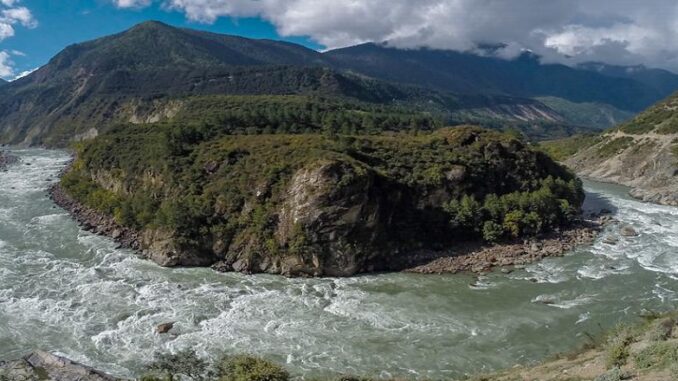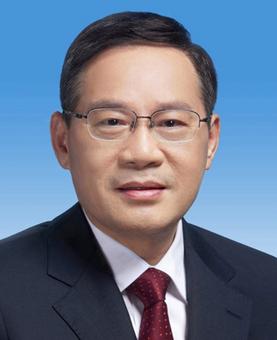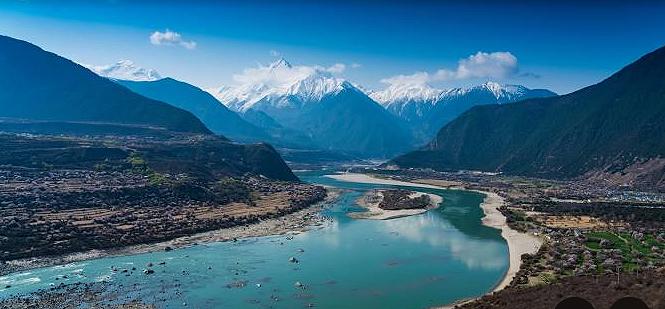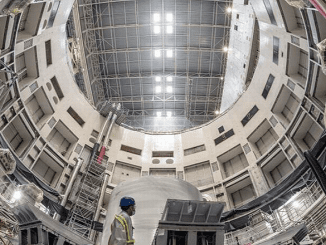
LINZI CITY, Tibet Autonomous Region, August 6, 2025 (ENS) – The world’s largest hydroelectric project held a groundbreaking ceremony in Linzhi City on July 19. Chinese Premier Li Qiang attended the event and officially announced the start of construction on the project.

The Yarlung Zangbo River hydropower project was first announced in 2020 and officially approved for construction in December 2024. The approval has triggered conflicts over water rights, fear of forced evictions, and the potential for ecological crises.
The new project will replace China’s Three Gorges Dam on the Yangtze River as the world’s largest hydroelectric power plant.
The new dam site is located on the lower reaches of the Yarlung Zangbo River, spelled Yarlung Tsangpo in Tibetan, the highest major river in the world.
When fully operational, the new dam is expected to generate approximately 300 billion kilowatt-hours of electricity annually, triple the output of the Three Gorges Dam, which is currently the world’s largest hydroelectric power station.
Over 2,900 kilometers (1,802 miles) long, the Yarlung Tsangpo River originates from the Angsi Glacier in western Tibet, southeast of Mount Kailash and Lake Manasarovar. Then the river forms the South Tibet Valley and Yarlung Tsangpo Grand Canyon before passing into the state of Arunachal Pradesh in India. Downstream from Arunachal Pradesh, the river becomes wider and is called the Siang. After reaching the Indian state of Assam, the same river is known as the Brahmaputra.
It then flows into Bangladesh as the Jamuna River. After merging with the Ganges River in Bangladesh, the river empties into the Bay of Bengal.
The new dam project has sparked widespread controversy. It poses a water crisis for millions of people in downstream villages in India and Bangladesh. If China releases floodwaters without warning, villages could be flooded.
Officials have not released many details about the Medog Hydropower Station, also known as the Lower Yarlung Zangbo River hydropower project, even its design or construction schedule.
The project will utilize a development approach that straightens the bend and diverts water through tunnels. Local electricity consumption is low, with most of the power being distributed to other areas.
Information on whether the new dam, like the Three Gorges Dam, will require the relocation of local Tibetans and submerge cultural relics remains unclear.
According to Xinhua News Agency, the project, located in Nyingchi City, Tibet Autonomous Region, will consist of five cascade hydropower stations with a total investment of 1.2 trillion RMB (approximately NT$4.9 trillion) or (US$167 billion).
The dam site is located at the “Great Bend” of the Yarlung Zangbo River, where the river meets Mount Namjagbarwa, forming a horseshoe-shaped bend. The drop in elevation over 2,000 meters in just 50 kilometers creates abundant hydropower resources.

But aside from those details, little is known about the project. A February report in The New York Times called it “The Mysterious Medog Dam in Tibet.”
Experts estimate that the Big Bend’s location in a canyon area, with inconvenient transportation and technical challenges, means construction may take 10 years.
The People’s Daily reports that the project will help advance China’s “dual carbon” strategy and is of great significance in combating climate change. Dual carbon refers to China’s carbon peak and carbon neutrality goals.
Neighboring Countries India and Bangladesh Tense
Since the launch of the Yarlung Zangbo River hydropower project, unclear details have heightened concerns in downstream countries.
Both India and Bangladesh have expressed concerns to China. The BBC reported that Pema Khandu, the governor of India’s Arunachal Pradesh state, expressed concern that the Brahmaputra River could face “serious drying up” once the dam is completed. A sudden release of water from the dam would devastate the riverside tribes.
In addition to the battle for water resources, Indian river science professor Kalyan Rudra warned that dams will intercept sediments, leading to a decrease in soil fertility downstream and erosion of river banks and coasts.
In January, India’s Ministry of External Affairs called on China to “protect the interests of downstream countries and engage in transparent dialogue.”
Bangladesh also wrote to the Chinese government in February, requesting more information on the project.
West-to-East Power Transmission Project Puts Tibetan Areas at Risk for Environment and Culture
Radio Free Asia reported that over the past few decades, China has aggressively built dams to generate electricity for industrial and economic development. After saturating its eastern region, China began developing the Qinghai-Tibet Plateau.
A study by the advocacy group International Campaign for Tibet, ICT, headquartered in Washington, DC, indicates that the number of dams under construction and planned in Tibet has skyrocketed from 114 to over 193 in just 10 years.
Large hydropower projects like these raise issues related to water resources, migration, culture, and ecology.
In 2024, hundreds of people protesting the Gangtuo Hydropower Station in Ganzi Tibetan Autonomous Prefecture, Sichuan Province, were arrested. Construction of the Gangtuo Hydropower Station, located on the upper reaches of the Jinsha River, would require the relocation of thousands of Tibetans and inundate numerous Tibetan temples, threatening the disappearance of centuries-old treasures of Tibetan Buddhist murals.
Earthquakes are common in the Himalayas. Just this past January, an earthquake struck Shigatse, Tibet Autonomous Region, killing over 100 people and damaging several reservoirs. The BBC reported that the Medog Hydropower Station is located in an area rich in biodiversity and prone to geological activity, making the construction of the dam potentially hazardous.
China’s hydropower development is gradually expanding to the west, raising concerns not only about water power but also about human rights and the environment.
Featured image: The Yarlung Zangbo River’s “Big Bend,” where the water level drops steeply, is where the world’s largest hydroelectric station will be located. It will have an estimated power generation capacity three times that of the Three Gorges Dam. (Photo by Kobe Jiang)
Editor’s Note: This report was compiled and translated by Xie Mingshan and Chen Wenzi of the Taiwan Environmental Information Center.



